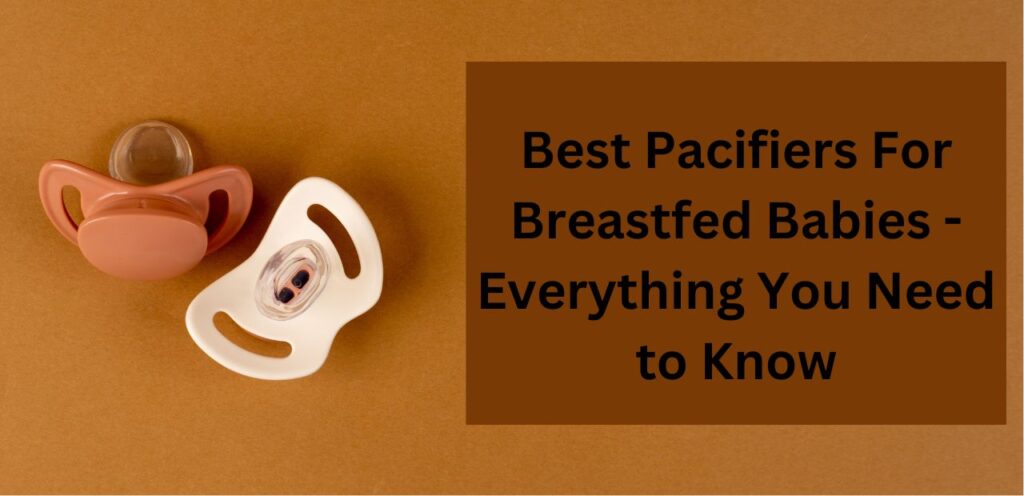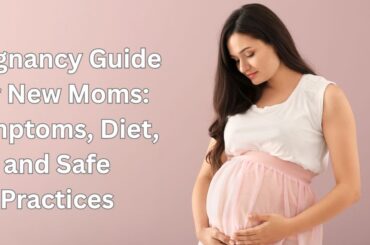You want the best pacifiers for breastfed babies as a new parent. It can be hard to find the right pacifier for kids who are fed breast milk. This guide will tell you everything you need to know about pacifiers for babies who are nursed, from their benefits to the best ones on the market.
Read our Guide When To Change Nipple Size Of Your Baby Feeding Bottle.
Why Use Pacifiers?
This item, which is also called a dummy or a soother, can be helpful for both kids and their parents. They meet a baby’s need to suck, which can make them feel better and calm. Pacifiers can be very helpful for babies who are fed breast milk when the mom needs a short break or when the baby needs to be calmed down in between feedings.
Can I Give My Newborn a Pacifier While Breastfeeding?
A lot of parents wonder if it’s okay to give pacifiers to babies who are only fed breast milk. The good news is that babies can use pacifiers and be fed breast milk together if they are used properly. Before giving your baby a pacifier, though, you should wait until you’re sure you can nurse for a while, usually three to four weeks. This keeps the breast and the baby from getting mixed up.
Choosing the Best Pacifiers for Breastfed Babies
1. Philips Avent Soothie
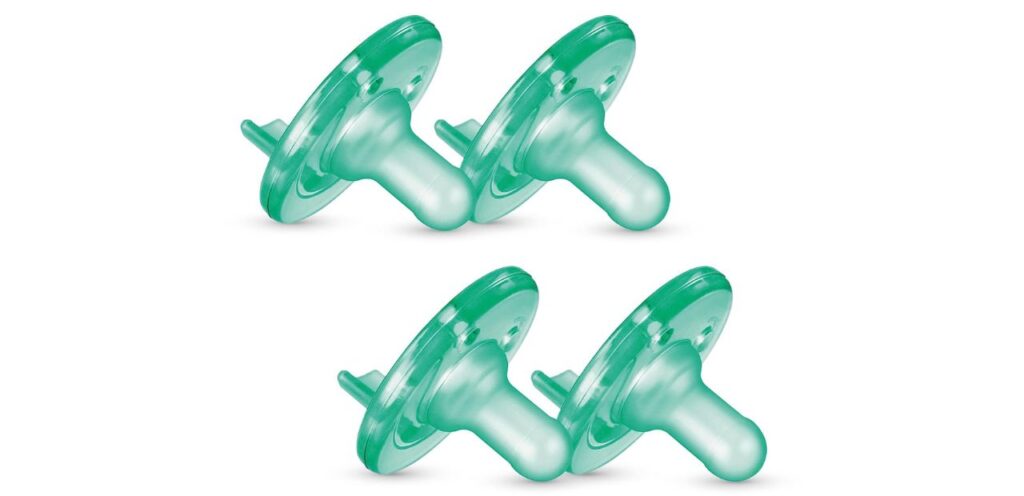
There’s a good reason why this pacifier is often called the best one for babies who are fed breast milk. It is made from hospital-grade plastic and is made to last. It is also easy to clean. The form looks a lot like a mother’s nipple, which can help babies who are fed breast milk avoid nipple confusion. This pacifier is used in a lot of hospitals, which is proof that it works well for babies. Because the Soothie is so simple, it doesn’t have any cracks or openings where germs or dirt can hide. This makes it a clear choice for your child.
2. MAM Newborn Pacifier
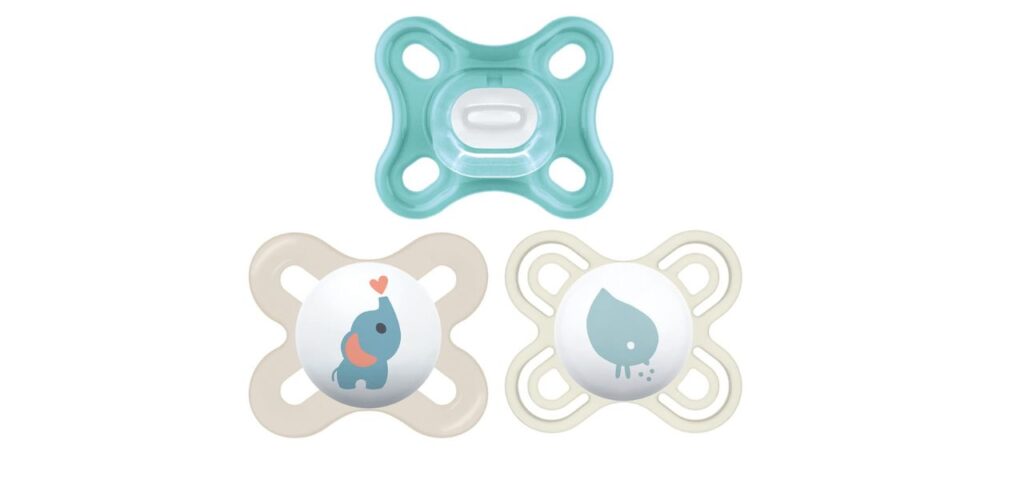
The uniform nipple on MAM pacifiers makes them stand out, and an amazing 94% of babies like them. Because they are made for babies up to 2 months old, this high acceptance rate makes them a great choice for breastfeeding babies who are still getting used to pacifiers. As your baby breathes in and out, the pacifier’s shield is curved to fit easily under their nose. MAM also sells bags that clean themselves, which is helpful for parents who need to keep their babies’ pacifiers clean while they’re out and about. The pacifiers have cute patterns on them, which makes this useful baby item more fun.
3. Natursutten Natural Rubber Pacifier
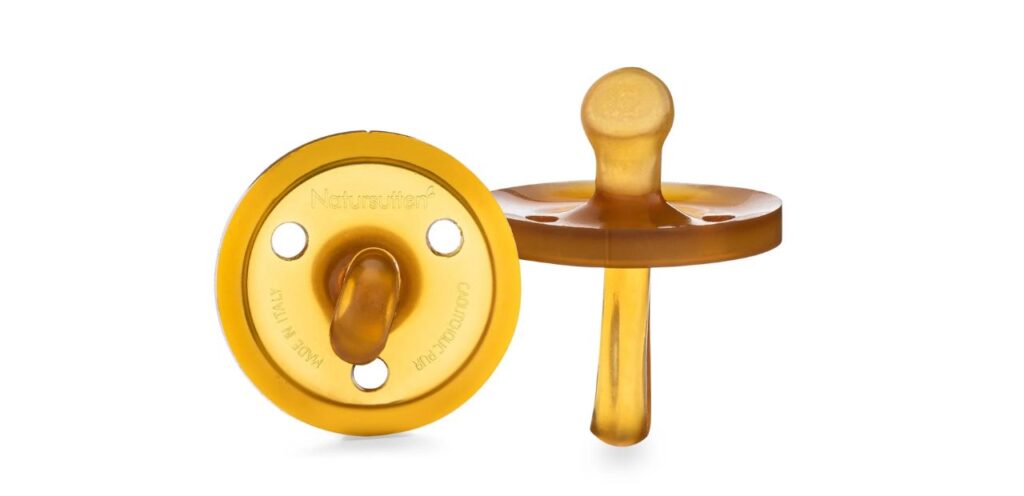
For parents who care about the environment, this pacifier is made from natural rubber latex and is soft and bendable. The material is biodegradable and harvested in a way that doesn’t harm the earth. The Natursutten pacifier is made from a single piece, so there are no cracks or places where germs could grow. Its shield is made with air holes to keep the skin around your baby’s mouth from getting irritated. It might cost a little more than some other choices, but many parents think the eco-friendly and natural materials make it worth the extra money.
4. NUK Newborn Orthodontic Pacifier
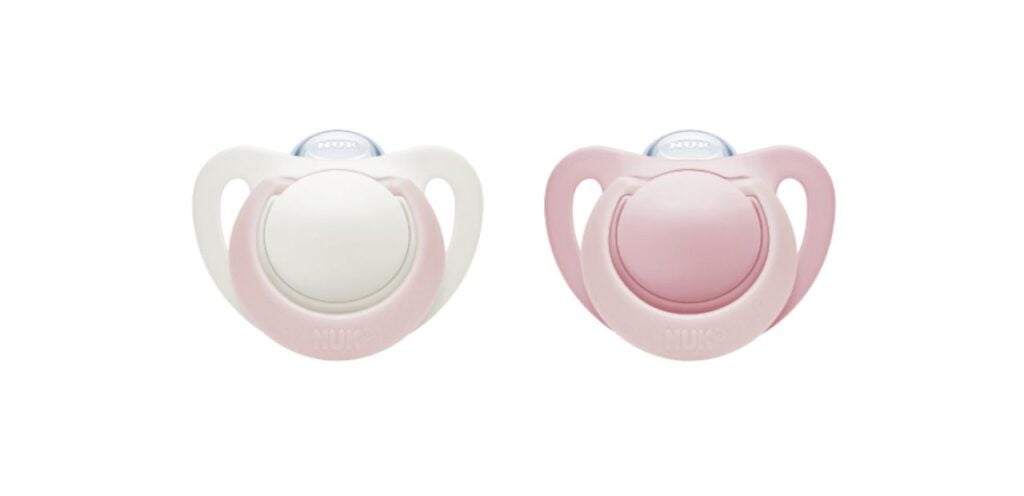
With its raised bottom that lets the tongue move around more, the NUK Newborn Orthodontic Pacifier is one of a kind. This design makes it easier for babies to switch between breastfeeding and using a pacifier, which lowers the chance that they will get their nipples mixed up. The heart-shaped shield fits nicely under your baby’s nose, letting them breathe easily. With a shape that looks like a mother’s nipple during nursing, NUK pacifiers are made to help babies’ mouths grow in a healthy way. For your baby’s safety, they are made from BPA-free silicone and come in a bunch of cute patterns.
5. Tommee Tippee Closer to Nature Pacifier

The “Closer to Nature” name of this pacifier from Tommee Tippee means it really does feel like mom’s breast. It has a symmetrical orthodontic nipple that helps teeth grow in a healthy way and feels a lot like nursing. The shield of the pacifier is curved to fit easily on your baby’s face and has air holes to let your baby breathe better. Tommee Tippee makes these pacifiers in different sizes so that they can grow with your baby and stay a good fit for as long as they use them. Because they are long-lasting and don’t contain BPA, these pacifiers can handle being used every day and being sterilized many times.
Using Pacifiers Safely
When your baby has a pacifier, don’t give them their toy if they don’t want it.
2. Don’t put the bottle on your baby or around their neck.
3. Every two months, get a new pacifier and look at it often for signs of wear.
4. Use soap and water to clean pacifiers often.
5. Don’t forget to eat or put off meals because of pacifiers.
Potential Concerns
You should know these things about pacifiers, even though they can be helpful:
1. One issue is that some babies might find it hard to switch between a breast or a bottle. This is why you should wait to give your baby a toy until nursing is going well.
2. Too much use: depending on pacifiers too much could make it harder to nurse or delay the signs of hunger.
3. Problems with your teeth: If you use a pacifier for a long time after age 2, it could change how your teeth fit together.
4. Ear infections: There is some proof that using a pacifier may make you more likely to get an ear infection, but it’s not all positive.
Best Infant Pacifier: Age-Appropriate Choices
Your baby’s feeding needs may change as they get bigger. As a general rule:
- 0 to 6 months: Use pacifiers that are small enough for babies.
- 6 to 18 months: Change to pacifiers that are a little bigger and made for older kids.
- 18 months or older: If you’re still using a pacifier, pick one that’s made for children.
- Do not forget that each baby is unique. Some people might like some forms or materials better than others. If your baby doesn’t like the first pacifier you try, don’t give up. You might have to try a few different pacifiers before you find the right one for your child.
When to Stop Using Pacifiers?
Most doctors say that babies should stop using pacifiers between 6 months and 1 year to lower their risk of getting ear infections. However, a lot of kids still use pacifiers to feel better until they are 2 to 4 years old. If you are worried about your child using a pacifier, talk to your child’s doctor.
Conclusion
It doesn’t have to be hard to find the best pacifiers for breastfed babies who are fed breast milk. You can find a pacifier that works well for your baby and helps you breastfeed by thinking about things like shape, size, and material. Don’t forget that the best pacifier is one that your baby likes and can use safely.
Be patient and open-minded as you look for the best pacifier for babies who are being breastfed or as you learn how to use pacifiers with babies who are being nursed. Different babies have different needs, so what works for one might not work for another.Visit Momvila to get more ideas on the best pacifiers for kids who are breastfed and other important baby items. If you need help making the best decisions for your child, our team is here to help.
